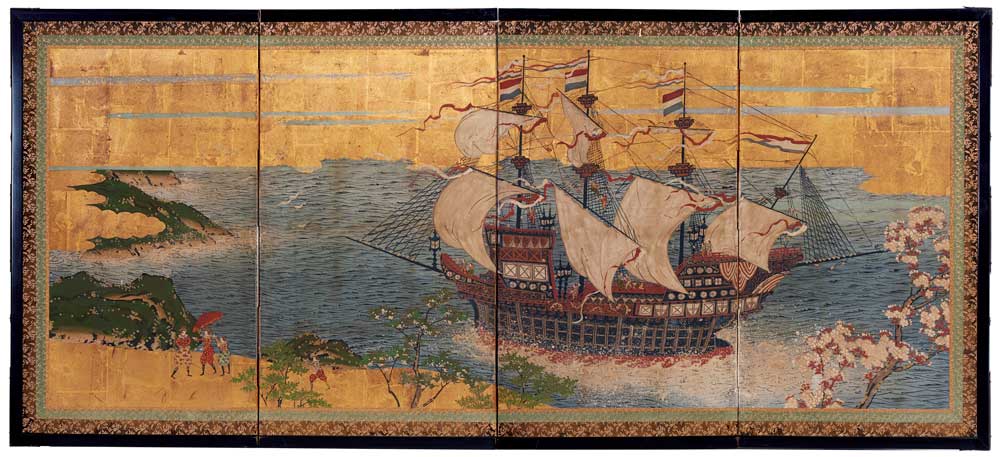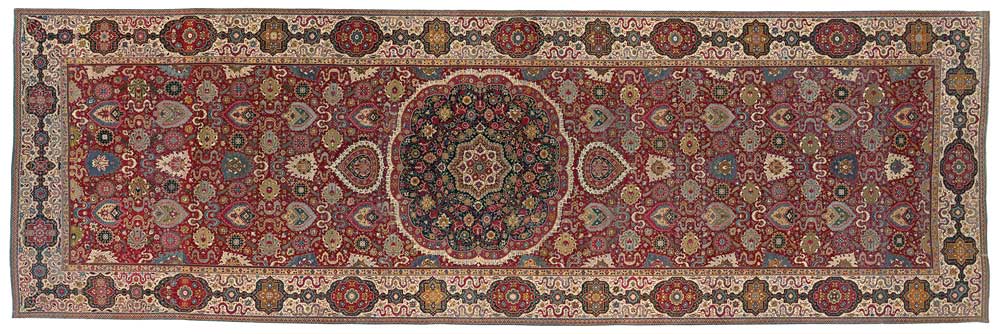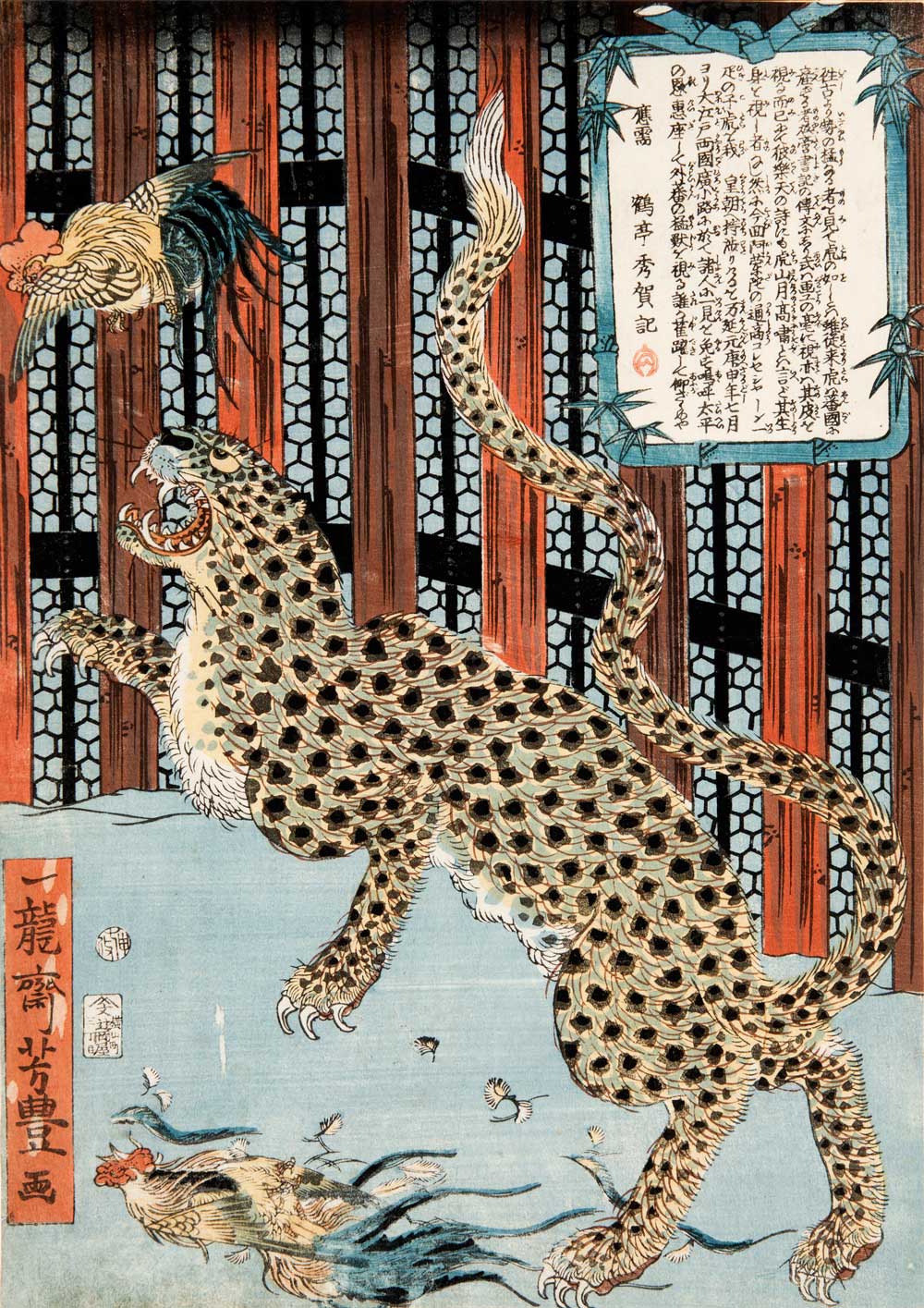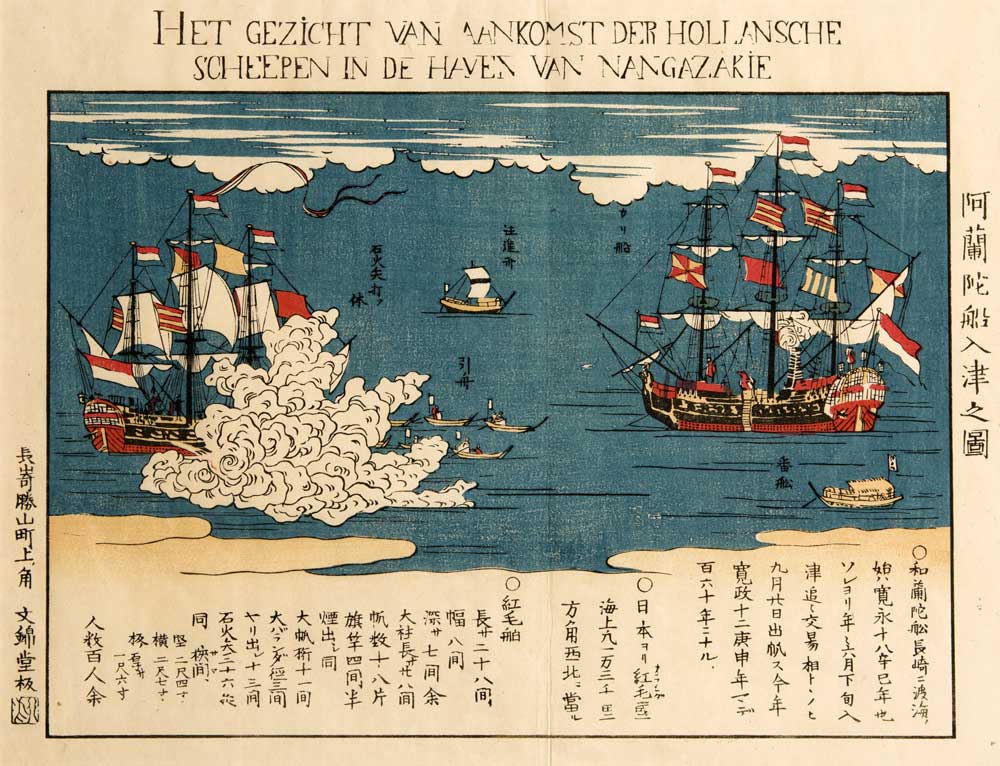‘Treasure Ships’ Art in Australia
Showing at the Art Gallery of South Australia, Adelaide, until 30 August 2015 and then at the Art Gallery of West Australia, Perth from 10 October 2015 – 31 January 2016, ‘Treasure Ships: Art in the Age of Spices’ is the first exhibition in Australia to present the complex artistic and cultural interactions between Europe and Asia from the 16th to the 19th centuries – a period known as the Age of Spices.

Dutch trading ship in Japanese waters, Japan, c.1870, four-panel screen, opaque watercolour, ink and gold on paper, 67.5 x 138.0 x 11.0 cm; Kerry Stokes Collection, Perth, 2006.004
The exhibition includes a rare showing of the National Gallery of Victoria’s 17th century, Indian ‘Trinitarias’ carpet – so called after the Convent de las Trinitarias Descalzas de San Ildefonso in Madrid and reputed to have been donated to the ‘Barefoot Nuns of the Trinity’ by King Philip IV of Spain during the 17th century (p. 98, HALI 168, Summer 2011). Plus 300 works of ceramics, decorative arts, furniture, metalware, paintings, prints and textiles from public and private collections in Australia, India, Portugal, Singapore and the United States.

Trinitarias carpet, India/Madrid, early–mid-17th century, northern India, found in Madrid, Spain, wool pile, cotton warp and weft, 1044.0 x 336.5 cm; Felton Bequest 1959, National Gallery of Victoria, Melbourne, NGV 91–D5
Visit on 18 July 2015 to catch ‘Interwoven Stories: Persian book arts in the age of spices’ – a talk on the reinterpretation of designs from illustrated manuscripts following the expansion of maritime trade routes between Europe and Asia, following the Ottoman capture of Constantinople/Istanbul in 1453, by Dr Susan Scollay (Independent art historian and curator, specialising in the arts and culture of the Islamic world and historic textiles).
Book talk tickets and visit the exhibition website here

India–Spain, Trinitarias carpet (detail), early–mid-17th century, northern India, found in Madrid, Spain, wool pile, cotton warp and weft, 1044.0 x 336.5 cm; Felton Bequest 1959, National Gallery of Victoria, Melbourne, NGV 91–D5
![Surcoat [jinbaori], Art Gallery of South Australia, Adelaide](https://hali.com/wp-content/uploads/2015/07/reTS229-T14375_0350.jpg)
China and Europe–Japan, Surcoat [jinbaori], with mon, late 18th century with 19th-century repairs, brocade created in China, velvet and factory print created in Europe, possibly France, garment constructed in Japan, cotton, wool, silk, velvet, metallic thread, natural dyes, supplementary weft and plain weave, wood, 101.0 x 85.0 cm; Helen Bowden Gift Fund 2015, Art Gallery of South Australia, Adelaide

Ichiryusai (Utagawa) Yoshitoyo, Japan, 1830–1866, On display in West Ryogoku [Nishi ryogoku ni oite kogyo]: Leopard, July 1860, Tokyo, colour woodblock print on paper (nishiki-e), 34.0 x 24.0 cm; d’Auvergne Boxall Bequest Fund 2014, Art Gallery of South Australia, Adelaide

Japan, The arrival of a Dutch ship at the port of Nagasaki in 1641 [Het gezicht van aankomst der Hollansche scheepen in de haven van nangazakie: Oranda fune nyushin no zu], 1800, Nagasaki; printed by Bunkindo, colour woodblock print on paper (nishiki-e), 30.0 x 40.0 cm; The Gwinnett Collection, Adelaide


























Comments [0] Sign in to comment